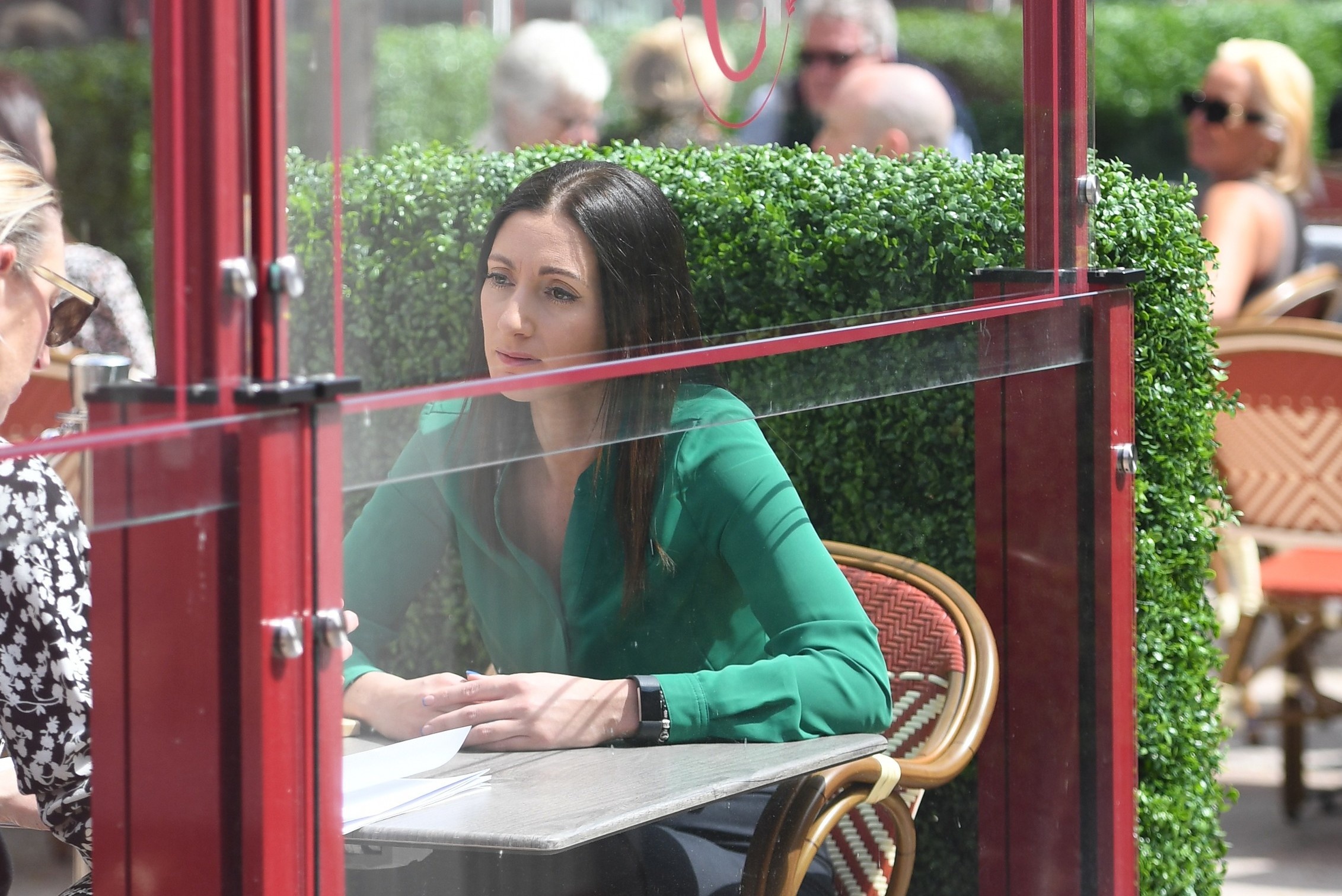FROM victims of domestic abuse to people facing the challenges of mental or physical disability, vulnerability presents in many ways, some of which might not be easy to spot.
As Lloyds Bank International’s new customer vulnerability manager, Sam Franco is responsible for helping the banking group support vulnerable customers in Jersey, Guernsey and the Isle of Man, making services more accessible for those at risk of harm or who need extra care.
Sam has taken on the role from Claire McNeill who is based in the Isle of Man and currently on maternity leave. Claire has curated the role over the past two years, building colleague training and relationships with charities to better understand and manage support needs.
‘It’s about embedding messages that relate to customer vulnerability into everything we do at branch level because that’s where we see vulnerability face-to-face.’ Sam explained. ‘Colleagues start their training when they join, undertaking four mandatory modules on vulnerability alongside bespoke training whenever we identify a gap.
‘Some training is in partnership with charities and this year we have delivered bereavement training and sessions on domestic and economic abuse, while we are planning sessions on substance abuse and gambling issues.
‘For customers experiencing financial difficulties, we have specially trained relationship mangers who can provide a full financial review. This is a chance to evaluate your current financial plan and make any necessary adjustments, to ensure that it aligns with your current circumstances or long-term goals. It provides us an opportunity to discover any unstated needs and see where else we might be able to assist you. This is a free service which also helps plan for any eventualities that may arise. In addition, we regularly run refresher courses with role-play to ensure colleagues feel confident in their interactions with customers in vulnerable circumstances.’
The Financial Conduct Authority defines vulnerability as ‘someone who, due to their personal circumstances, is especially susceptible to harm, particularly when a firm is not acting with appropriate levels of care.’ It is a wide remit, although vulnerability is usually caused by four common drivers: health, capability, life events and resilience, which can encompass people who become vulnerable due to a change in personal circumstances such as a bereavement or losing a job.
‘As our perception of vulnerability has changed to include less obvious characteristics, the number of customers we identify as vulnerable has increased,’ said Sam. ‘Research shows that up to 50% of the population may display at least one characteristic of vulnerability at some point. We often only know someone is vulnerable when we start a conversation, and this means asking the right questions. Discretion, confidentiality and data protection are of utmost importance at Lloyds and colleagues need to explain how information will be used. With consent, we can add details about a vulnerability to a customer’s profile, so they don’t need to mention their vulnerability every time they interact with the bank.’
Lloyds Bank International’s approach involves five stages: understanding customers and the vulnerability and harm they are exposed to; recording and sharing additional support needs to improve future interactions; practical actions providing the right products, services, and procedures; colleague capability – ensuring colleagues can support vulnerable customers; and monitoring and evaluating this twice a year.

Support may be as simple as providing coloured acetone sheets to make documents easier to read, while Braille buttons, hearing loops, wheelchair access and talking ATMs all improve accessibility.
At a time when more banking services are digitised, vulnerable customers get priority access for face-to-face services. Those who find visiting a branch challenging may also request video calls or home visits.
On other occasions, additional support might be required. Therefore, Lloyds Bank International has recently enrolled to become a Safe Spaces location within the Channel Islands and Isle of Man, for anyone experiencing domestic abuse. This is a discreet, confidential service that’s available to all, whether you bank with Lloyds or not.
If you are experiencing any form of domestic abuse and require support, you can visit any of their Isle of Man, Jersey or Guernsey branches, approach a colleague and ask to use their ‘Safe Space’. The safe space will be a private room equipped with a telephone and a list of useful numbers and you can take your time to call a loved one, a local charity or shelter, a taxi to take you somewhere safe or the police, or you may prefer to just spend some time alone reflecting on your options. The experienced team of branch colleagues will support you with compassion and discretion, in a confidential safe space.
‘We are there to support customers and the first step is reaching out to us. We’ll do our best to fit around a customer’s needs,’ Sam explained. ‘We have over 90 charities on our pan-island charity directory as well as contacts with community banks and the police in each jurisdiction, so we’re in a good position to help customers get practical support beyond what we can offer from a banking perspective.’
It’s hard to imagine a safer, more pleasant place to live than Jersey. However, Jersey isn’t immune to financial crime. In just two weeks, the States of Jersey Police reported that Islanders had lost more than £300,000 to a fake Martin Lewis advert scam. Additional scams that are trending include fake ticket scams, pet purchase scams, and a ‘Dear Mum’ WhatsApp scam.
‘Colleagues are educated about scams and how to look out for them as they become more sophisticated,’ said Sam. ‘Some customers come in to let us know they’ve been scammed but others might be coming in to make a payment. By asking additional questions and looking at the body language of the customer, for example, if they seem nervous, or noticing whether they’ve come in with someone they don’t normally attend the branch with, we can help identify if something unusual is going on. One of the hardest scams to deal with involves romance fraud, when someone is not just affected by the loss of money, but the loss of someone they thought wanted a relationship with them.’
The bank has introduced website support to help customers experiencing financial difficulties and created guides to staying safe from fraud and scams. In addition, Lloyds Bank International has developed its social media channels to deliver warnings about new scams.
‘It’s common for people to feel embarrassed or to feel as though they have been at fault to fall for a scam, but scammers are increasingly sophisticated and people of all ages and backgrounds can become victims of fraud,’ Sam added. ‘We ask vulnerable customers additional questions if they are wanting to make a payment that’s out of the ordinary for them as we need to feel comfortable the payment is genuine. If a person is in immediate danger, we can invoke banking protocol and contact the police.’
For the past four years, as branch manager in Jersey, Sam has seen firsthand the impact that the right training and support can have for vulnerable customers. However, after 20 years’ working in banking within the group, there is one skill she believes everyone needs.
‘Empathy is vital for this role and for anyone working in banking these days,’ she reflected. ‘You need to be able to see things from a customer’s perspective, especially a vulnerable customer’s perspective, if you’re going to deliver the best service. I came into banking from retail and many of our front-line colleagues also come from retail, or a hospitality background. Provided someone has empathy and compassion, it’s possible to gain many of the qualifications you need on the job.
‘Finding yourself in vulnerable circumstances is common and many of us will experience vulnerability at some point in our lives. Accessibility and inclusivity are natural considerations in everything we do. My priority is ensuring we address every situation without judgment in a safe and confidential environment.’






